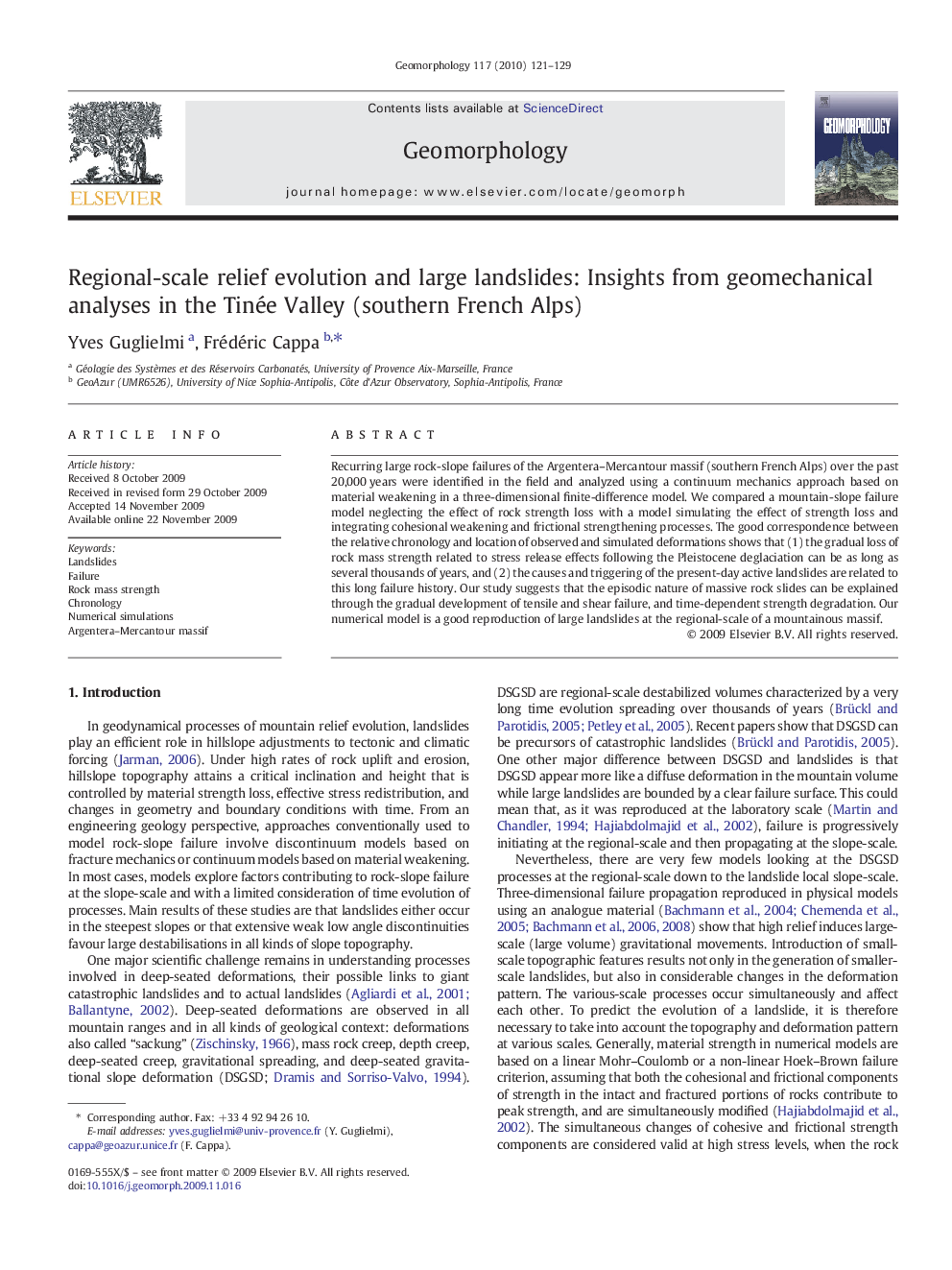| Article ID | Journal | Published Year | Pages | File Type |
|---|---|---|---|---|
| 4685942 | Geomorphology | 2010 | 9 Pages |
Recurring large rock-slope failures of the Argentera–Mercantour massif (southern French Alps) over the past 20,000 years were identified in the field and analyzed using a continuum mechanics approach based on material weakening in a three-dimensional finite-difference model. We compared a mountain-slope failure model neglecting the effect of rock strength loss with a model simulating the effect of strength loss and integrating cohesional weakening and frictional strengthening processes. The good correspondence between the relative chronology and location of observed and simulated deformations shows that (1) the gradual loss of rock mass strength related to stress release effects following the Pleistocene deglaciation can be as long as several thousands of years, and (2) the causes and triggering of the present-day active landslides are related to this long failure history. Our study suggests that the episodic nature of massive rock slides can be explained through the gradual development of tensile and shear failure, and time-dependent strength degradation. Our numerical model is a good reproduction of large landslides at the regional-scale of a mountainous massif.
